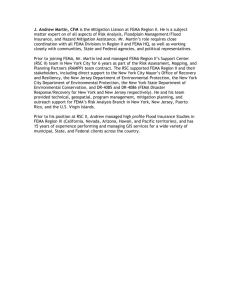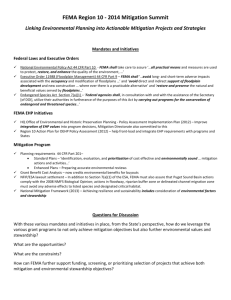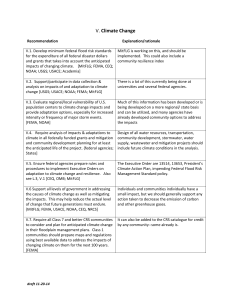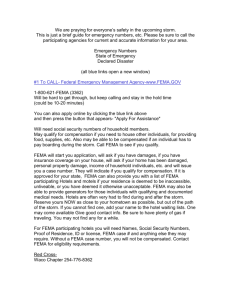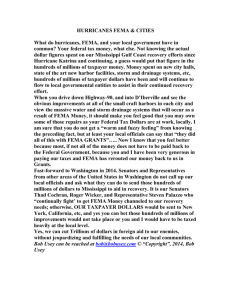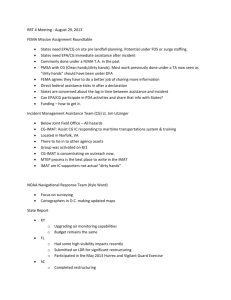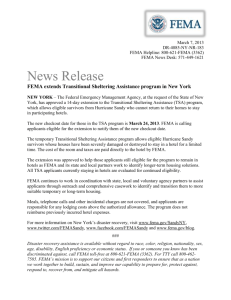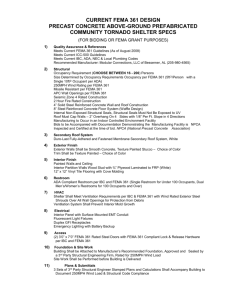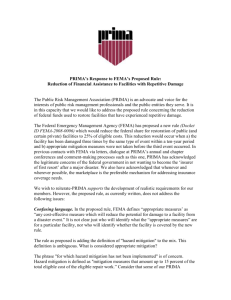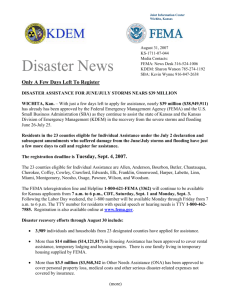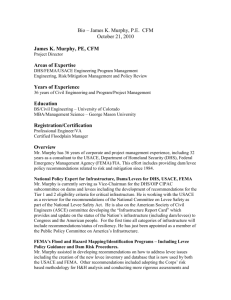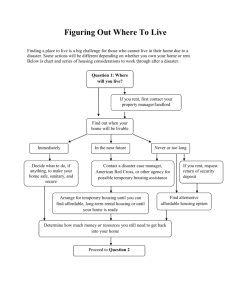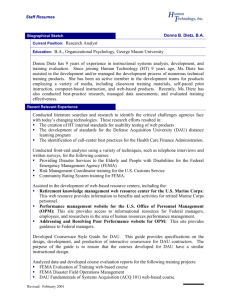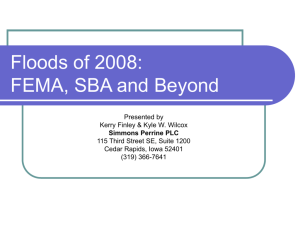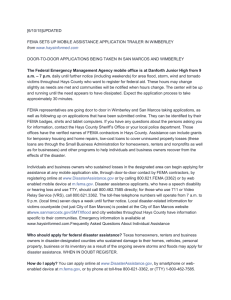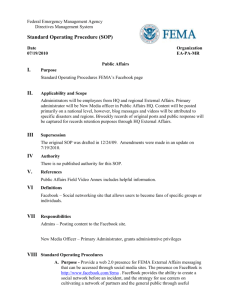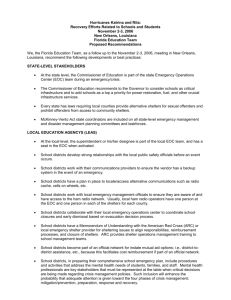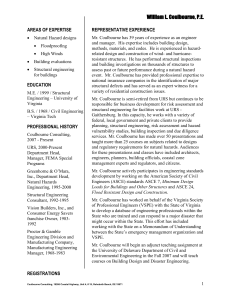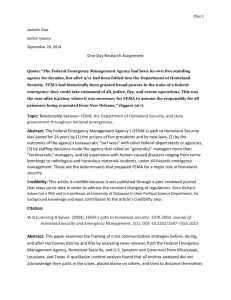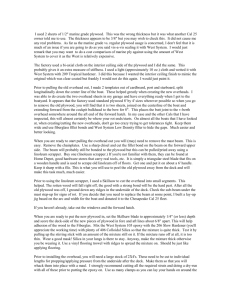PROTECT YOUR PROPERTY FROM WIND AND WATER DAMAGE
advertisement
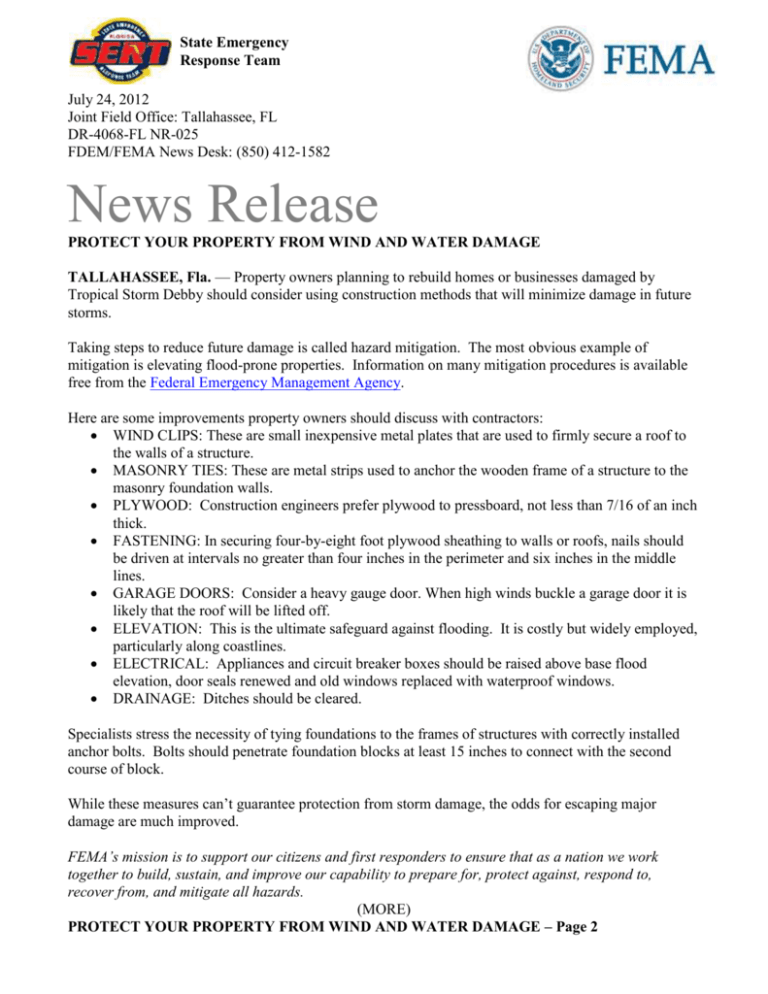
State Emergency Response Team July 24, 2012 Joint Field Office: Tallahassee, FL DR-4068-FL NR-025 FDEM/FEMA News Desk: (850) 412-1582 News Release PROTECT YOUR PROPERTY FROM WIND AND WATER DAMAGE TALLAHASSEE, Fla. — Property owners planning to rebuild homes or businesses damaged by Tropical Storm Debby should consider using construction methods that will minimize damage in future storms. Taking steps to reduce future damage is called hazard mitigation. The most obvious example of mitigation is elevating flood-prone properties. Information on many mitigation procedures is available free from the Federal Emergency Management Agency. Here are some improvements property owners should discuss with contractors: WIND CLIPS: These are small inexpensive metal plates that are used to firmly secure a roof to the walls of a structure. MASONRY TIES: These are metal strips used to anchor the wooden frame of a structure to the masonry foundation walls. PLYWOOD: Construction engineers prefer plywood to pressboard, not less than 7/16 of an inch thick. FASTENING: In securing four-by-eight foot plywood sheathing to walls or roofs, nails should be driven at intervals no greater than four inches in the perimeter and six inches in the middle lines. GARAGE DOORS: Consider a heavy gauge door. When high winds buckle a garage door it is likely that the roof will be lifted off. ELEVATION: This is the ultimate safeguard against flooding. It is costly but widely employed, particularly along coastlines. ELECTRICAL: Appliances and circuit breaker boxes should be raised above base flood elevation, door seals renewed and old windows replaced with waterproof windows. DRAINAGE: Ditches should be cleared. Specialists stress the necessity of tying foundations to the frames of structures with correctly installed anchor bolts. Bolts should penetrate foundation blocks at least 15 inches to connect with the second course of block. While these measures can’t guarantee protection from storm damage, the odds for escaping major damage are much improved. FEMA’s mission is to support our citizens and first responders to ensure that as a nation we work together to build, sustain, and improve our capability to prepare for, protect against, respond to, recover from, and mitigate all hazards. (MORE) PROTECT YOUR PROPERTY FROM WIND AND WATER DAMAGE – Page 2 Disaster recovery assistance is available without regard to race, color, religion, nationality, sex, age, disability, English proficiency or economic status. If you or someone you know has been discriminated against, call FEMA toll-free at 800-621-FEMA (3362). If you have a speech disability or hearing loss and use a TTY, call 800-462-7585 directly; if you use 711 or Video Relay Service (VRS), call 800-621-3362. FEMA’s temporary housing assistance and grants for public transportation expenses, medical and dental expenses, and funeral and burial expenses do not require individuals to apply for an SBA loan. However, applicants who receive SBA loan applications must submit them to SBA loan officers to be eligible for assistance that covers personal property, vehicle repair or replacement, and moving and storage expenses. ### For more information on Florida’s disaster recovery, visit www.fema.gov or http://www.floridadisaster.org/. On Facebook, go to www.facebook.com/FloridaSERT. To receive Twitter updates: http://twitter.com/FLSERT or www.twitter.com/femaregion4.

